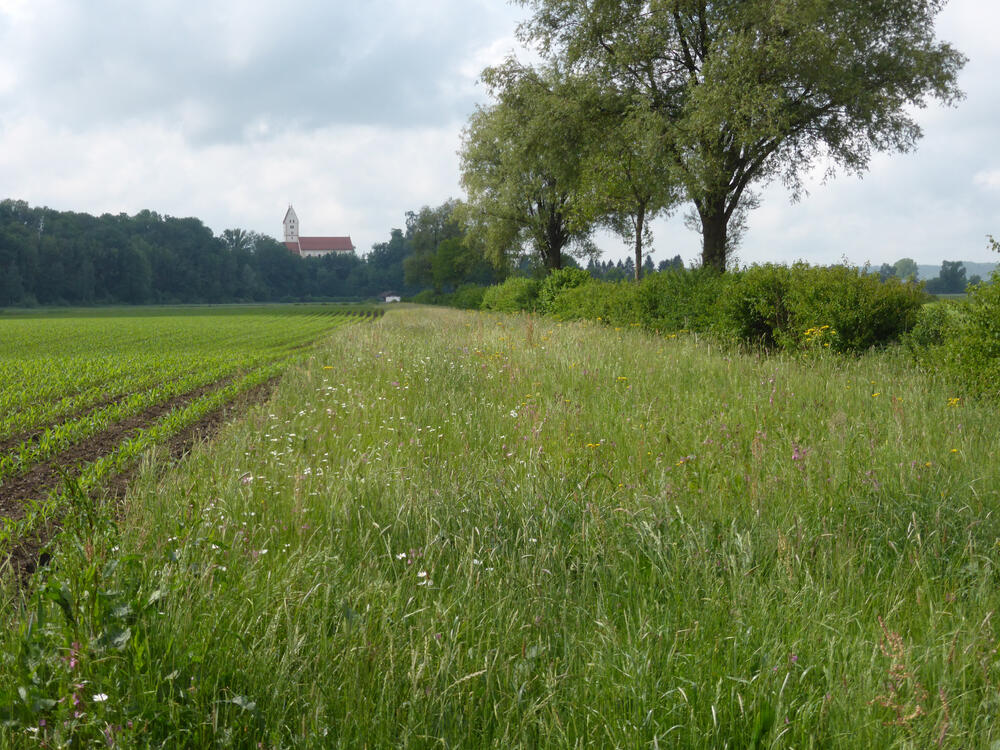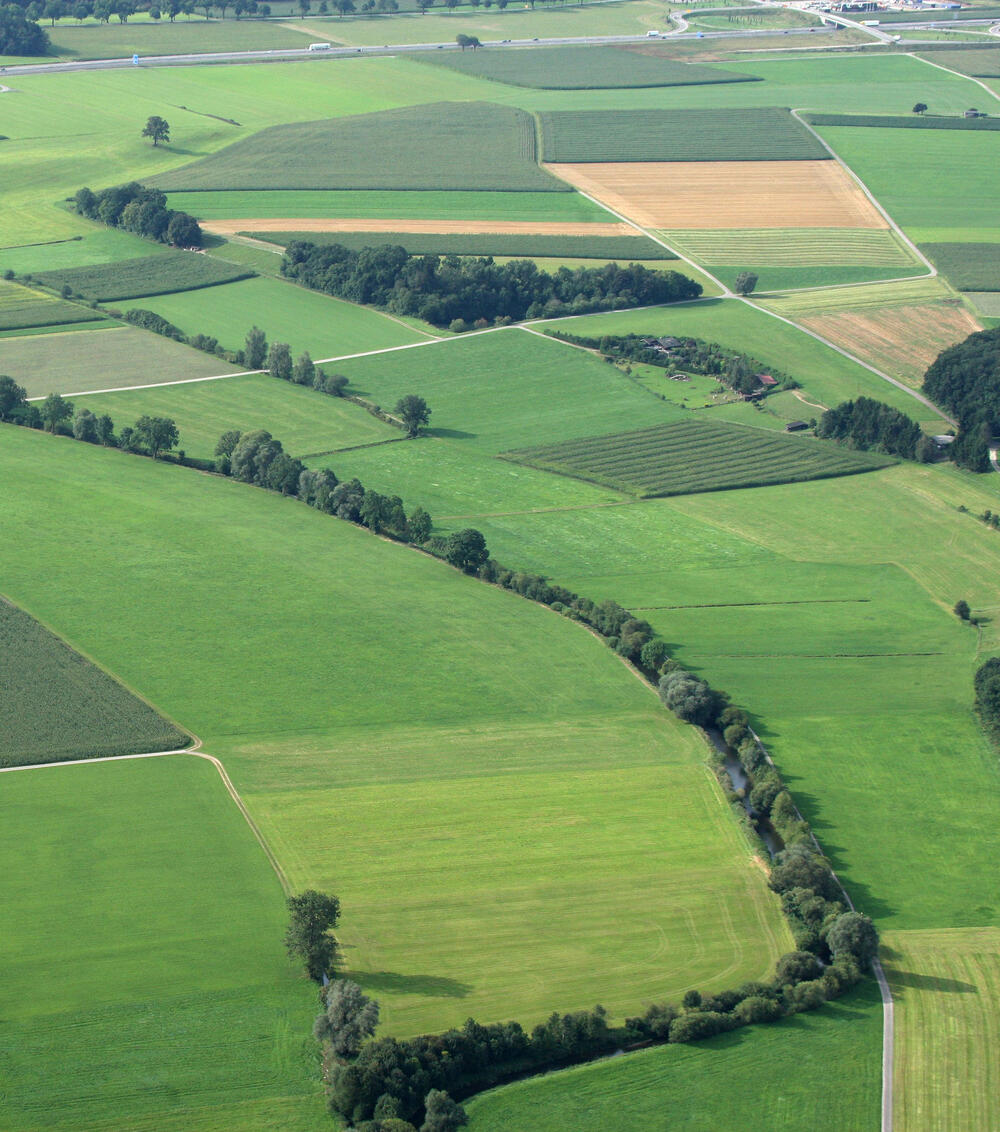DBU aktuell No. 7 | 2020| English
Information on Grant Support Activities of the German Federal Environmental Foundation (Deutsche Bundesstiftung Umwelt)
1.) Cooperation creates success - nature conservation in intensive grassland
In the beginning, there was the Ice Age: When the meltwater run off from the Alpine glaciers and formed the Günz Valley, diverse ecologically valuable habitats developed, such as wetlands and flower meadows, floodplains and moorlands. Even today, the Günz – at 92 kilometers the longest stream system in Bavaria – is considered a regionally important biotope network axis between the Alpine foothills and the Danube valley. However, the Günz Valley is now one of the largest grassland areas in Germany with intensive agricultural use. According to the State Institute for Agriculture, its meadows are not rich of different kind of species, in no other Bavarian region was more grassland converted to arable land between 2005 and 2015.
How can a nature-friendly and extensive use succeed in such a region? The Günztal Cultural Landscape Foundation, based in Ottobeuren, investigated ways to do this from 2015 to 2020 in the project "Nature Conservation in Intensive Grassland Regions - Biotope Network Günztal."
"Successes for agriculture and biodiversity"
"In the project, successes for agriculture and biodiversity in the Günztal were achieved in a variety of ways: through leasing and purchase of valuable areas, cooperation with municipalities, newly created funding opportunities for extensive grassland use – and intensive cooperation with farmers, associations and authorities," said project manager Elena Hofmann and project manager Sebastian Hopfenmüller. In total, the project created 32 new wetland habitats and 6676 trees and shrubs were planted. On more than 52 hectares of meadows, the use has been extensified, i.e. fertilization is either completely avoided or greatly reduced and the meadows are not mowed until mid-June. This allows many meadow plants to bloom again. Extensive grazing has been started on another 20 hectares, and riparian strips have been replanted along streams for more than five kilometers.
"Taking into account the needs of all stakeholders"
An important factor in the success of the project was the Günztal Land Agency founded by the Cultural Landscape Foundation. It arranges compensation areas for industrial companies and municipalities whose construction projects interfere with nature and the landscape. These areas are then managed and further developed by the foundation as nature conservation areas.
Since the government's contract-based nature conservation program in the Günz Valley was not very well received, the "Günz Valley Grassland Program" was created as an alternative with the help of experts from administration and practice and tested as a model in the Kettershausen community area. More than 16 hectares of extensive hay meadows were created by 14 farmers. Project manager Hopfenmüller: "This makes it clear that cooperation is possible when the needs of all participants are taken into account."
Project manager Hofmann names another "ingredient" to the recipe for success: "During excursions and lectures over the past five years, more than 3,000 participants have been made aware of the goals and importance of the conservation project work.
A success story that has obviously also convinced the Bundesamt für Naturschutz (BfN): Following the DBU funding, the project will continue to be supported by the BfN.



